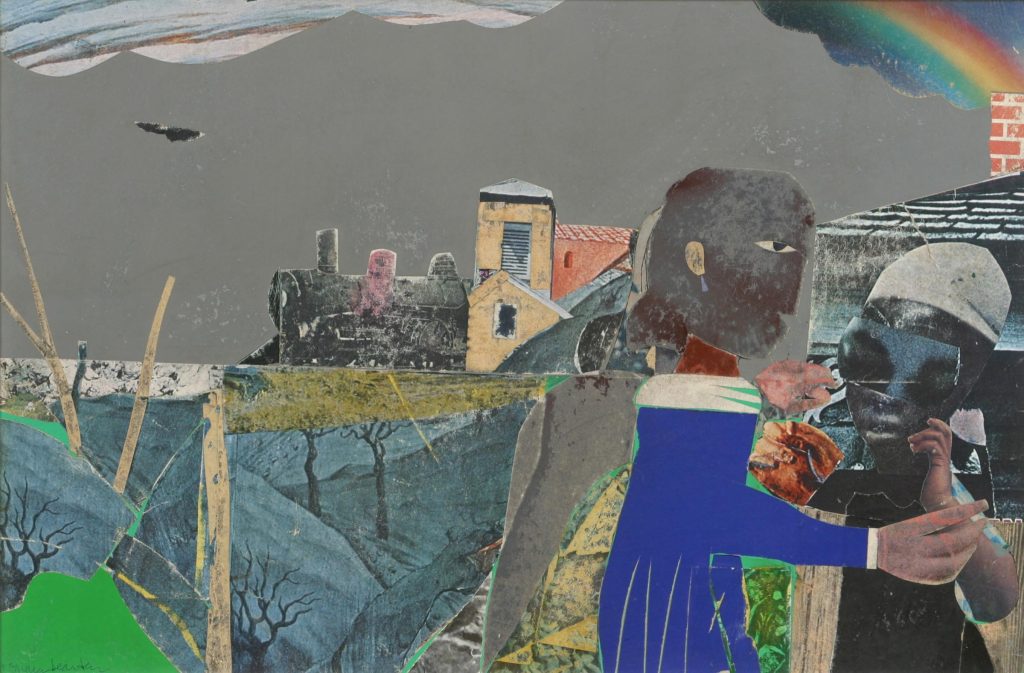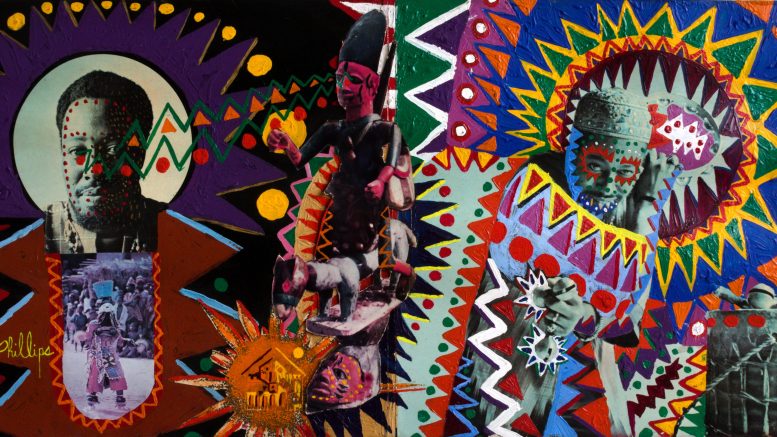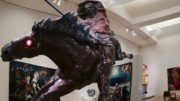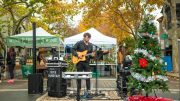Museum’s new exhibition highlights Black artists from the 1950s through ’70s
By Ken Magri
The Crocker Art Museum’s new exhibition, “Black Artists in America, from Civil Rights to the Bicentennial,” showcases over 60 works from the 1950s, ’60s and ’70s, offering an artistic glimpse into a compelling period in our nation’s history.
The exhibit, which opened Feb. 4 and runs through May 19, features 48 Black artists and a wide range of styles, mediums and subject matter.
“This exhibition provides the Crocker with an unparalleled opportunity to present many of the most important artists working throughout the United States during the mid-century,” said Crocker curator Francesca Wilmott. Within those pivotal decades, which saw the rise of the Civil Rights and Black Power movements, Black artists were redefining their own styles and what they wanted their art to say.
Much of Black art in earlier decades was inspired by two Black scholars with differing philosophies. In the 1920s, Rhodes Scholar Alain LeRoy Locke argued in his book, “The New Negro,” that African American artists were overly influenced by popular European styles. Locke wanted them to have a better understanding of themselves and create individualized styles based on decorative and symbolic African art.
But in his 1943 book, “Modern Negro Art,” historian and artist James A. Porter felt that exploiting racial concepts the way Locke wanted stifled creativity. According to Earnestine Jenkins, curator of Crocker’s “Black Artists in America” exhibit and a professor of art history at the University of Memphis, Porter thoroughly researched the diaspora of scattered African populations and found even wider spheres of influence and aesthetic connections between artists. “Porter just believed that scholars needed to carry out comparative research in these areas before jumping to conclusions,” she said.
As the decades progressed, a new generation of Black artists found that they could take inspiration from any style to make their statements, including influences from both European and African traditions.
Perhaps the best known artist in the Crocker exhibition is Romare Bearden. Originally studying painting under the German artist George Grosz, Bearden switched to collage in 1964. By cutting up photographs, colored paper and found images, he reinvigorated the collage medium with his arrangements of everyday life in Harlem and the rural South.
Bearden said he often started with a large rectangle and worked around it with smaller shapes. This idea can be seen in “The Prevalence of Ritual, Tidings.” Two figures embrace one another in the foreground, while Bearden’s straight lines and right angles anchor the scene with a distant locomotive crossing the horizon.

Three works by Alma Woodsey Thomas show how her painting style became more developed and abstract from the 1950s to the ’70s. Thomas began to paint after retiring from teaching junior high school at 68. Her 1976 painting “Sunset Duet” is both energetic and tranquil, as two striking hues of red and purple are pitted against each other in a struggle for space on the canvas. At the age of 81, Thomas was the first Black woman to have a solo exhibition at the Whitney Museum of American Art.
“Not only did these artists create groundbreaking artworks, but their creative pursuits often transcended the canvas,” Wilmott said. “They also worked as teachers, activists, musicians and writers, indelibly shaping the future of art history.”
James Phillips’s work demonstrates the influence that music had on his art throughout his career. In the early 1970s, Phillips joined AfriCOBRA, an artist group dedicated to using African iconography and aesthetics while trying to make art with positive political statements. His mixed media work, “Prince of Peace,” was created on an album cover. Its alternating color patterns recall the saxophone bursts of Ornette Coleman and John Coltrane, two jazz greats.
One thread that links many of these artists is their use of at-hand materials like burlap, paper bags, cardboard, coins, straw and human hair. Jenkins said that it comes from the artists’ exploration of African American folk art and traditional African arts.
By combining collage, pencil, crayon and oil paint onto her small canvas, Minnie Evans’s kaleidoscopic work “Four Figures” serves as a good example. This inventive folk artist made images based on the Bible, by combining her own visions and flowers from Airlie Gardens in Wilmington, North Carolina where she worked as a gatekeeper. Evans originally sold paintings for 50 cents, until an art dealer helped move her artworks out of obscurity and into public galleries.
Social commentary is another theme that weaves through many artworks in the show. Cliff Joseph’s powerful mixed media painting “Superman,” juxtaposes a withering, half-skeletal white man holding tools and symbols of racism. “My art is a confrontation,” Joseph wrote, as quoted in the exhibit’s catalog. “Those who are at the head of the oppressive system know well the power of art and fear it in the hands of the people.”
Rev. Martin Luther King Jr. once wrote to Joseph, “I have always felt, since I first saw it, that your art expressed the meaning and sacrifice of our struggle.”
Charles White is mostly known for his realistic black-and-white portrayals of Blacks in America. However, it’s White’s colorful 1966 oil on canvas titled “Fulfillment” that’s on display at the Crocker. Serving as a metaphor for the exhibition, a female figure looking outward stands confidently above the viewer in orange and gray drapery.
These works and the legacies behind them helped reshape much of America’s art history as a multi-faceted one, drawing on wide-ranging influences that are as rich and diverse as its people.
“The Crocker went the extra mile to make new acquisitions for this show, like the piece titled ‘Migrants’ by my grandmother, Dr. Samella Lewis,” said Unity Lewis, Sacramento artist, historian and musician. Lewis curated the Crocker’s “Black Artists on Art” exhibit in 2022.
He said the museum’s inclusion of poems from local students, collected by artist Shonna McDaniels, who is the founder and director of the Sojourner Truth African Heritage Museum on Florin Road, and an adjacent jewelry show by Sacramento artist Joyce J. Scott is “a must see if you are in the Sacramento area.”
This story is part of the Solving Sacramento journalism collaborative. Solving Sacramento is supported by funding from the James Irvine Foundation and James B. McClatchy Foundation. Our partners include California Groundbreakers, Capital Public Radio, Outword, Russian America Media, Sacramento Business Journal, Sacramento News & Review, Sacramento Observer and Univision 19.




Be the first to comment on "Crocker presents how Black artists ‘shaped the future’ of America’s art history "